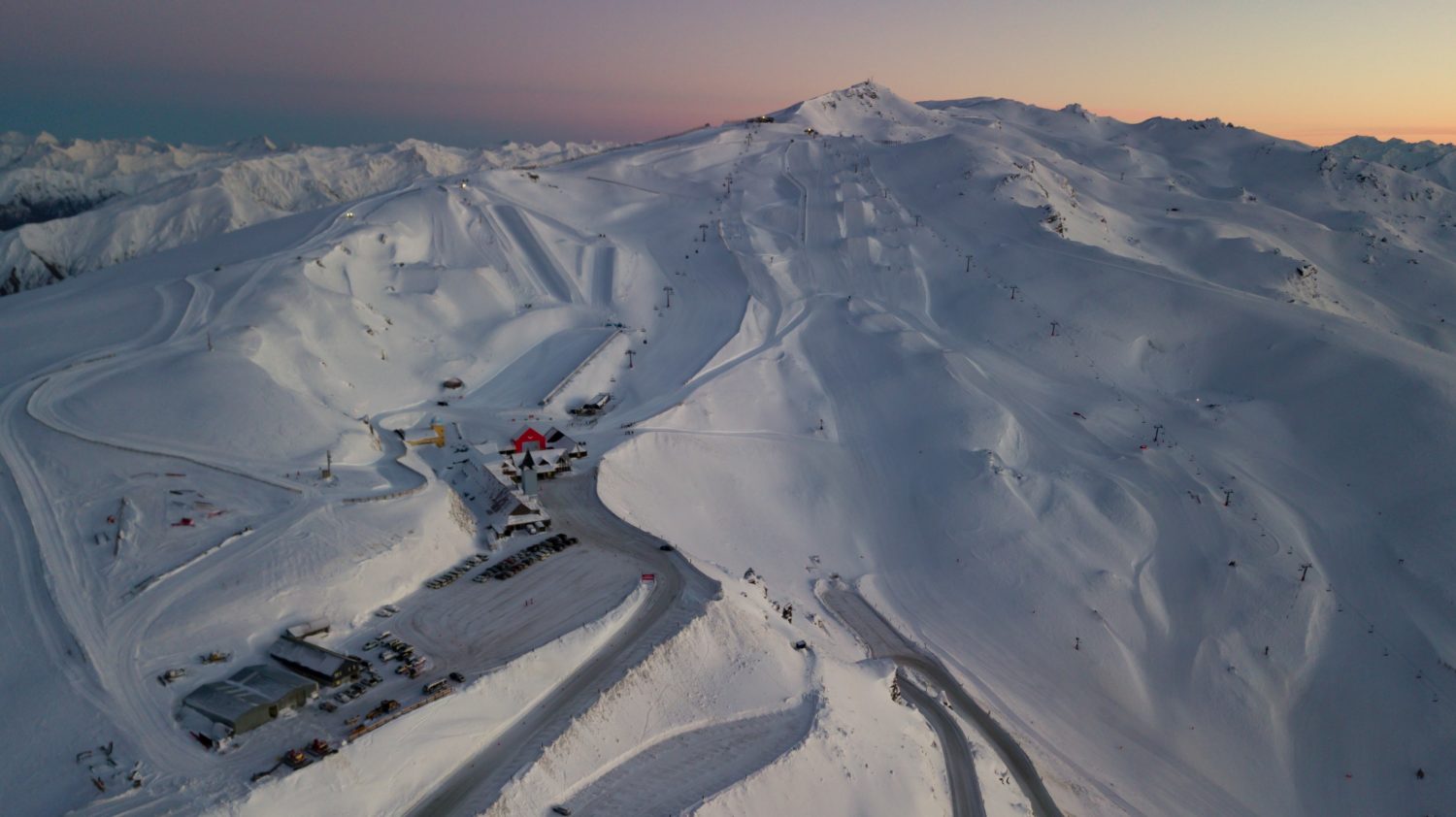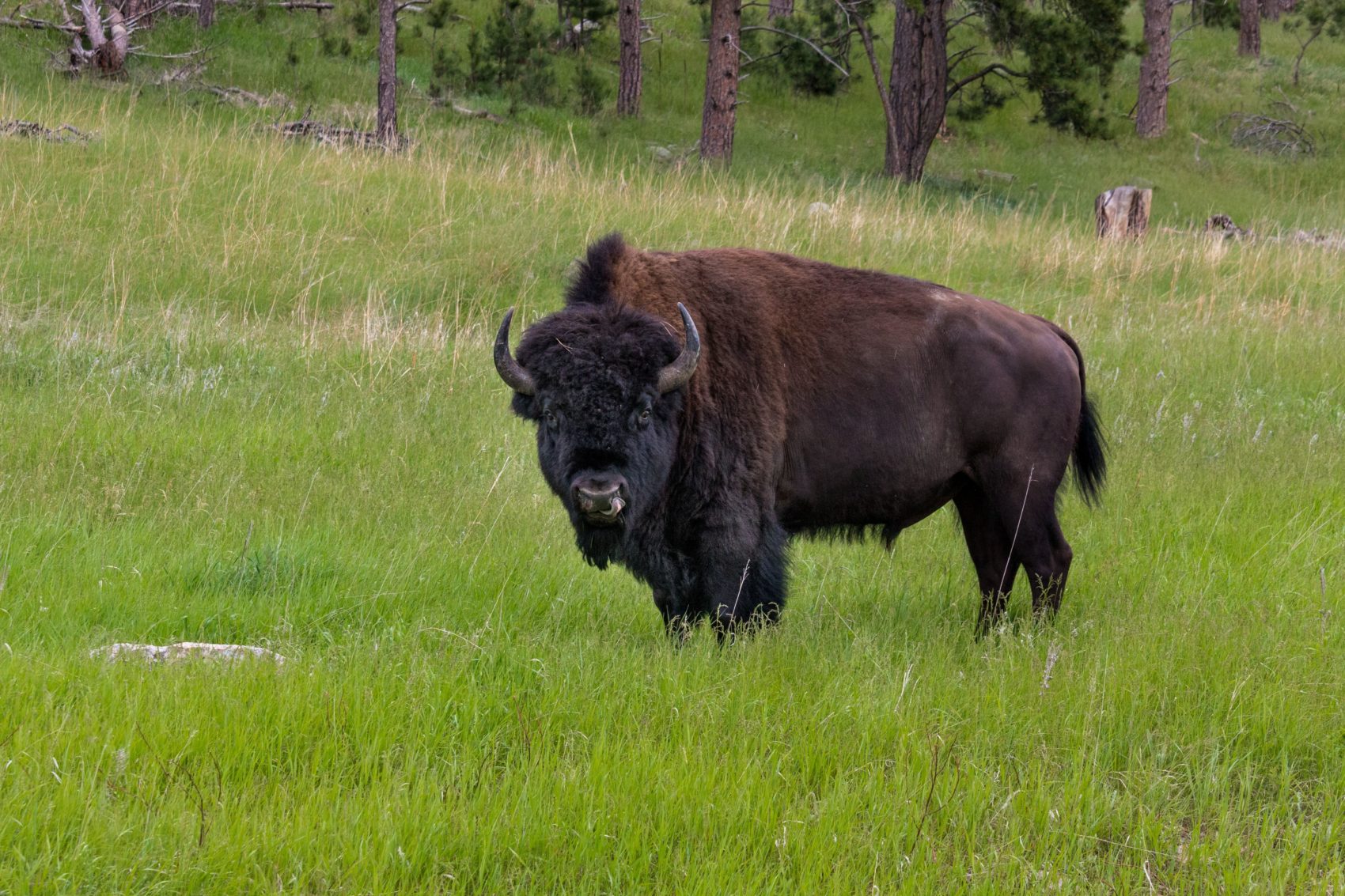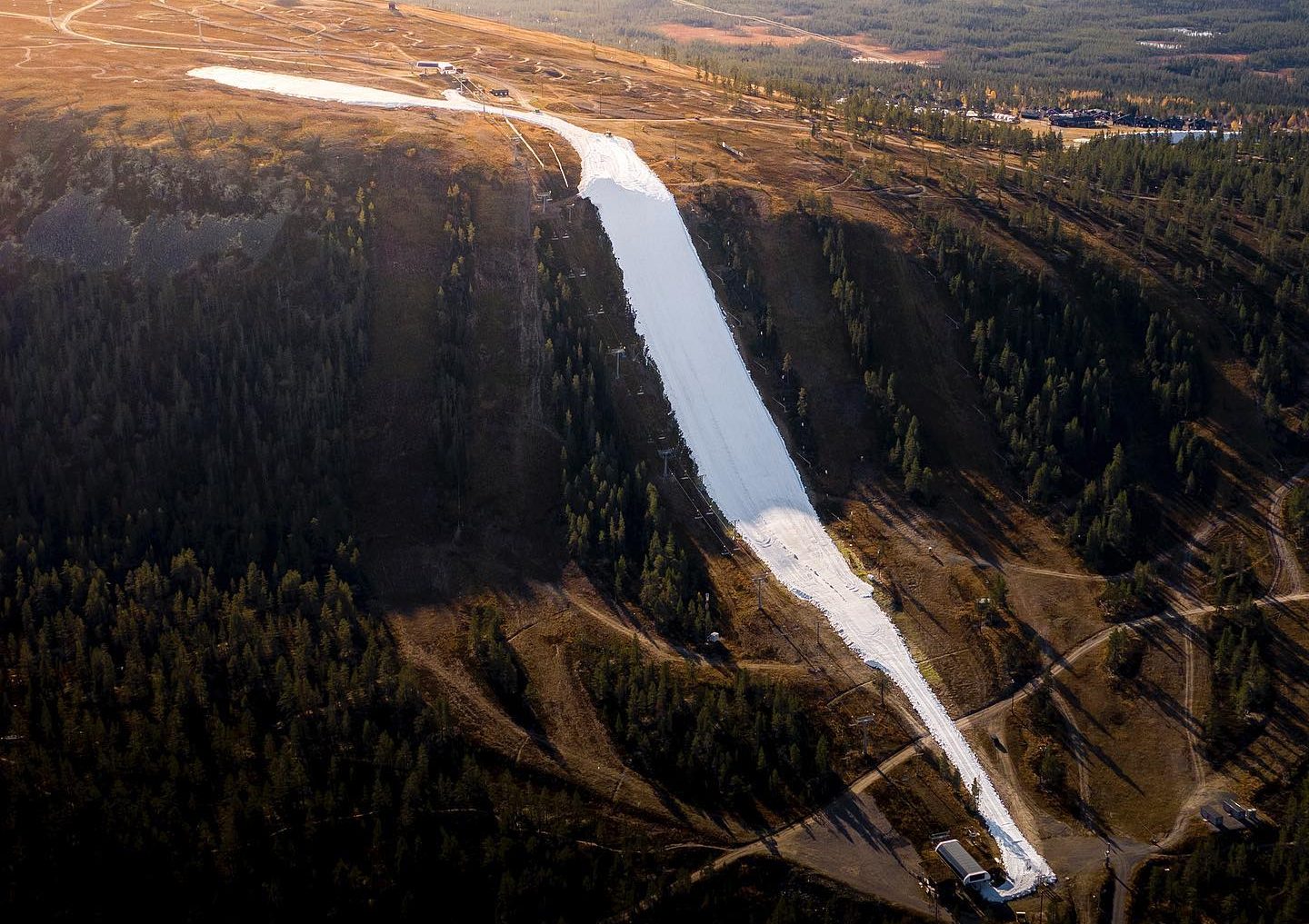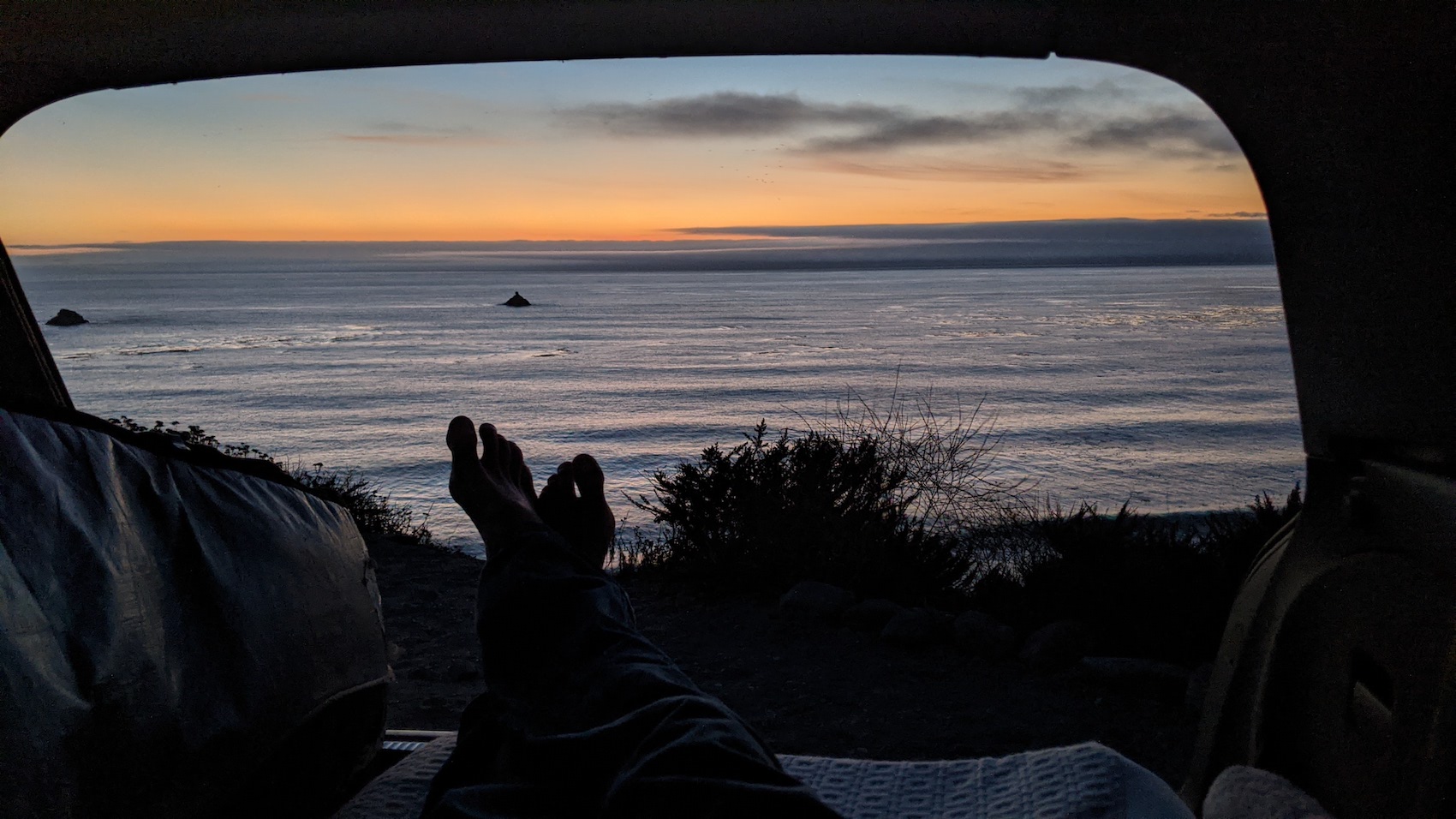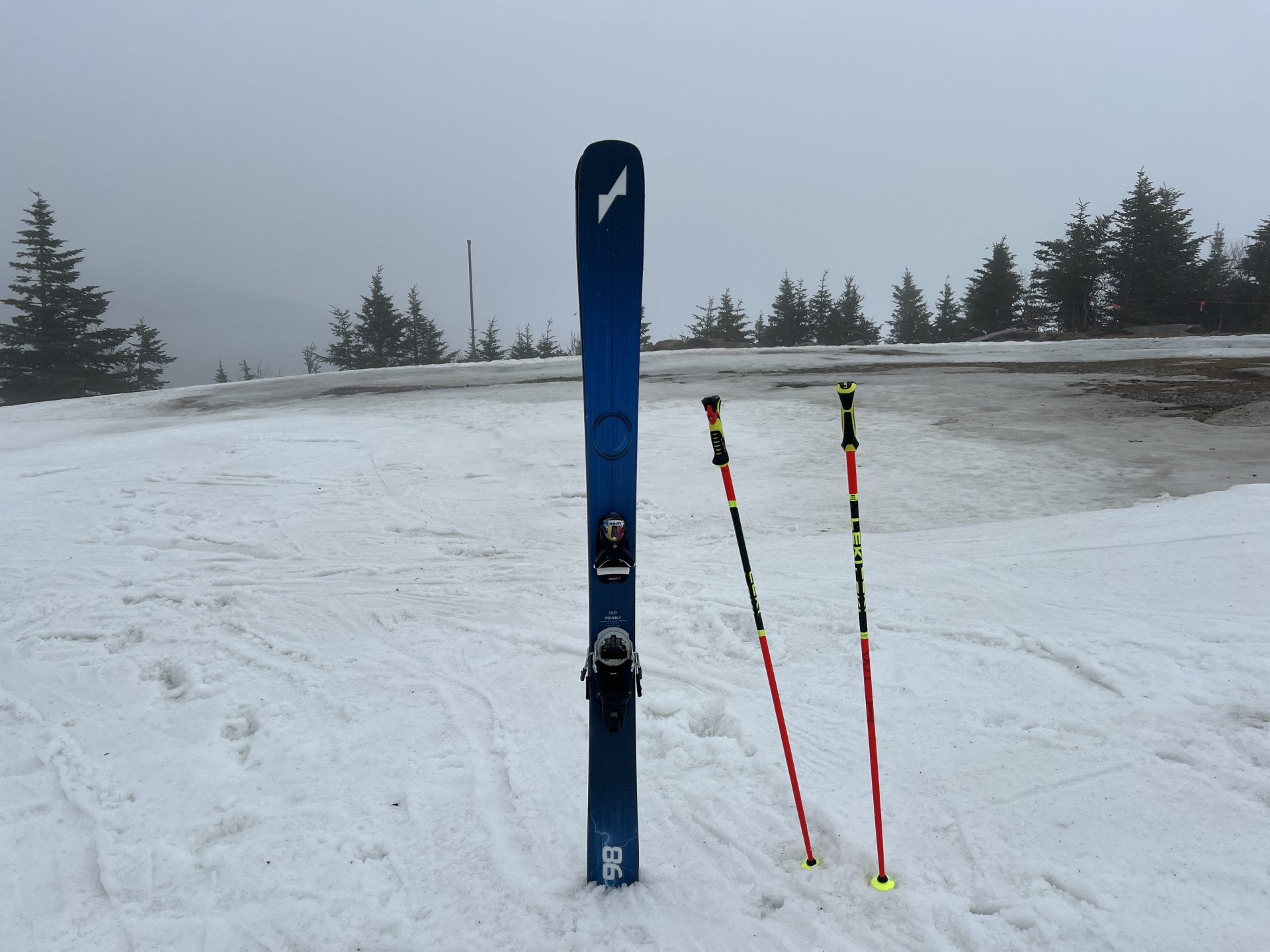
There are a lot of different skis to choose from in the industry and finding the ski that is best suited for you can be a challenge. Before the beginning of the season, I was looking to find one ski that I could use for the whole year. The goal was to find one pair of skis that I would be able to use on all different terrain and in all weather conditions. I normally take two to three pairs of skis with me on every trip I take to be able to ski anything I want on the mountain. This year, the 2023/24 Peak 98 All Mountain Ski by Bode was the only pair of skis that I clicked into all season.
Peak Skis was founded by former pro skier Bode Miller and big mountain skier and mountaineer Chris Davenport in 2022. The reason I chose the Peak 98s was because I ski mostly in the Northeast which is known for being icy and where the snow conditions can change by the hour. I also wanted a pair of skis that I could depend on in the spring when the snowpack is heavy and not worry about getting stuck in mashed potatoes or catching an edge.
Peak 98 Specs
- Weight 1,785 g/ski (168)
- Shovel 127 mm
- Waist 98 mm
- Tail 115 mm
- Available in 160, 168, 178, 184, 190 cm
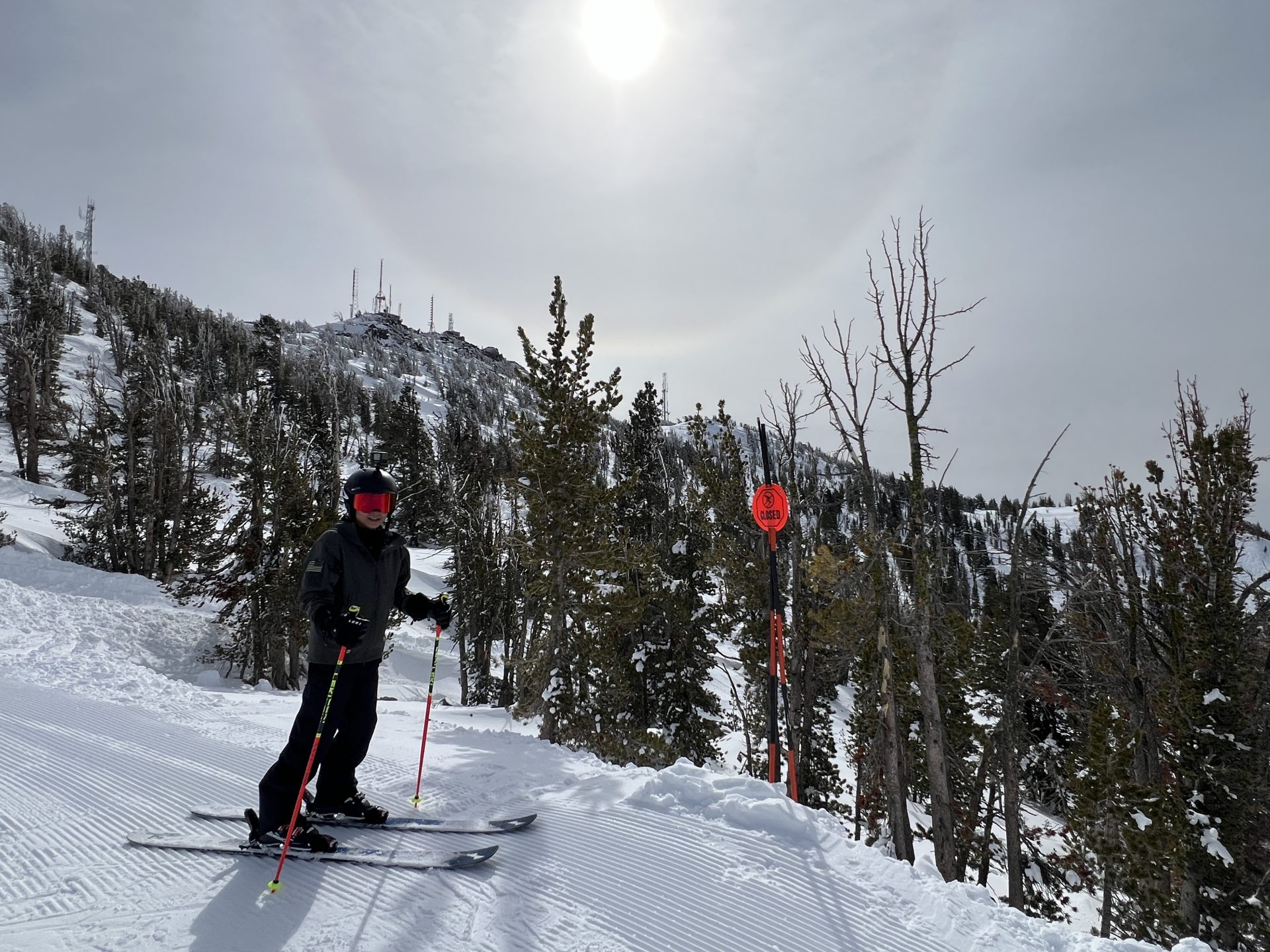
According to Peak Skis, the Peak 98 is the model that 80 percent of skiers should be piloting 80 percent of the time. If 80 percent of skiers should be hitting slopes on the Peak 98’s 80 percent of the time it must mean that those skis can handle almost any conditions. It also means that most skiers would go to the Peak 98’s as their choice of ski throughout the season. I would not recommend them for skiers who only ski one type of terrain. People who only hit the backcountry or the park should get skis that are specifically designed for that type of terrain.
This past season I hit resorts in New England, the Mid-Atlantic, and the West Coast and never had an issue with the performance of the ski at all. I skied on powder, ice, hard-packed groomers, glades, moguls, chutes, and bowls, and I even tried them out in a terrain park and hit some small features. The Peak 98s handled all of those conditions and it gave me the confidence that I could go through anything.
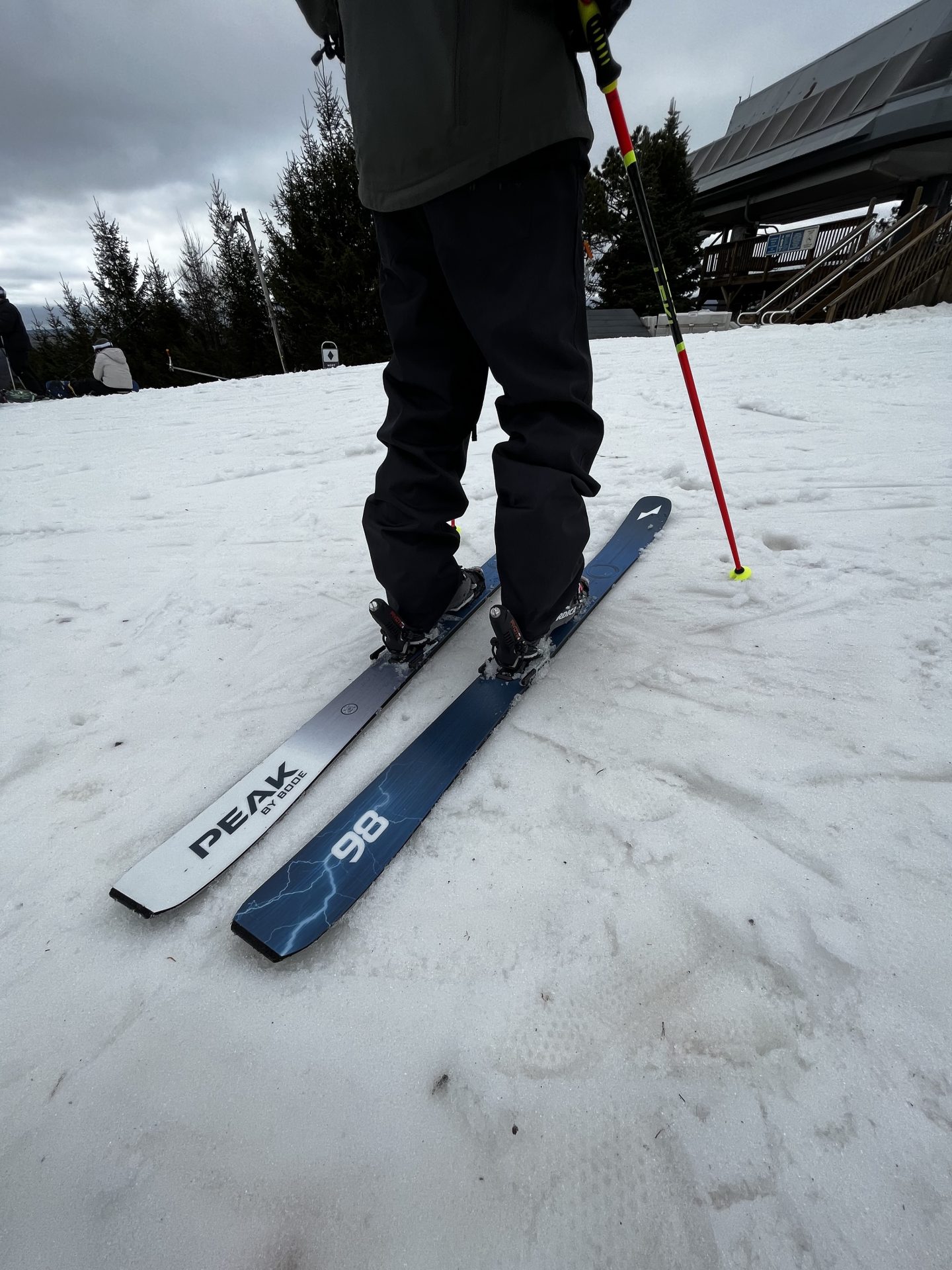
Construction
The Peak 98 features a paulownia/ash wood core that’s in between two layers of titanal metal. The bottom layer of titanal does not span sidewall-to-sidewall, but the upper layer does. Peak’s proprietary KeyHole Technology™ is an oval cutaway in the upper layer of an alloy of every Peak Ski by Bode Miller. It is designed for the ski to perform easier to vary turn shapes because of that forgiving forebody. Off-trail, the KeyHole™ allows the reduction of the sidecut of Peak’s wider skis which makes the skis track better in soft, crusted, and unconsolidated backcountry snow.
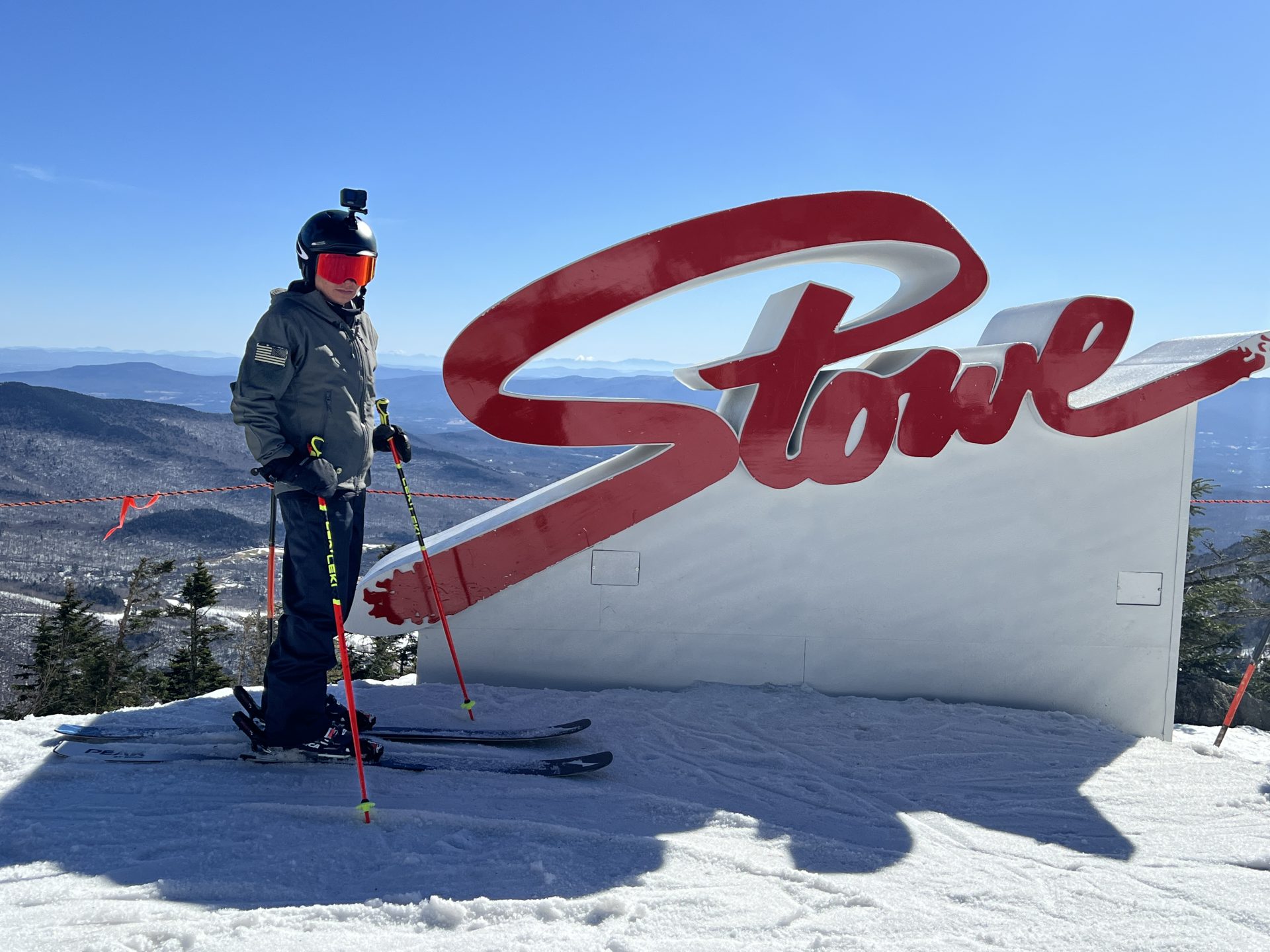
Shape & Rocker Profile
The Peak 98 shape and rocker profile are similar to other models in the industry for All Mountain Skis. The tips and tails have a small tapering, but not too much, and the tips and tails are squared off past the widest points. The Peak 98 has a deep tip rocker line for its width, a 7mm underfoot camber, and its tail rocker line is much shallower. What I noticed about the Peak 98s while on the mountain is that the front of the skis seem softer and the back of the skis are much stronger than the front. Although the tip and front of the ski seem to be softer, it still has enough power to not chatter when hitting chunks or carving on hard-pack groomers. It also has enough flex when I want to hit bumps and go hit some powder in the glades.
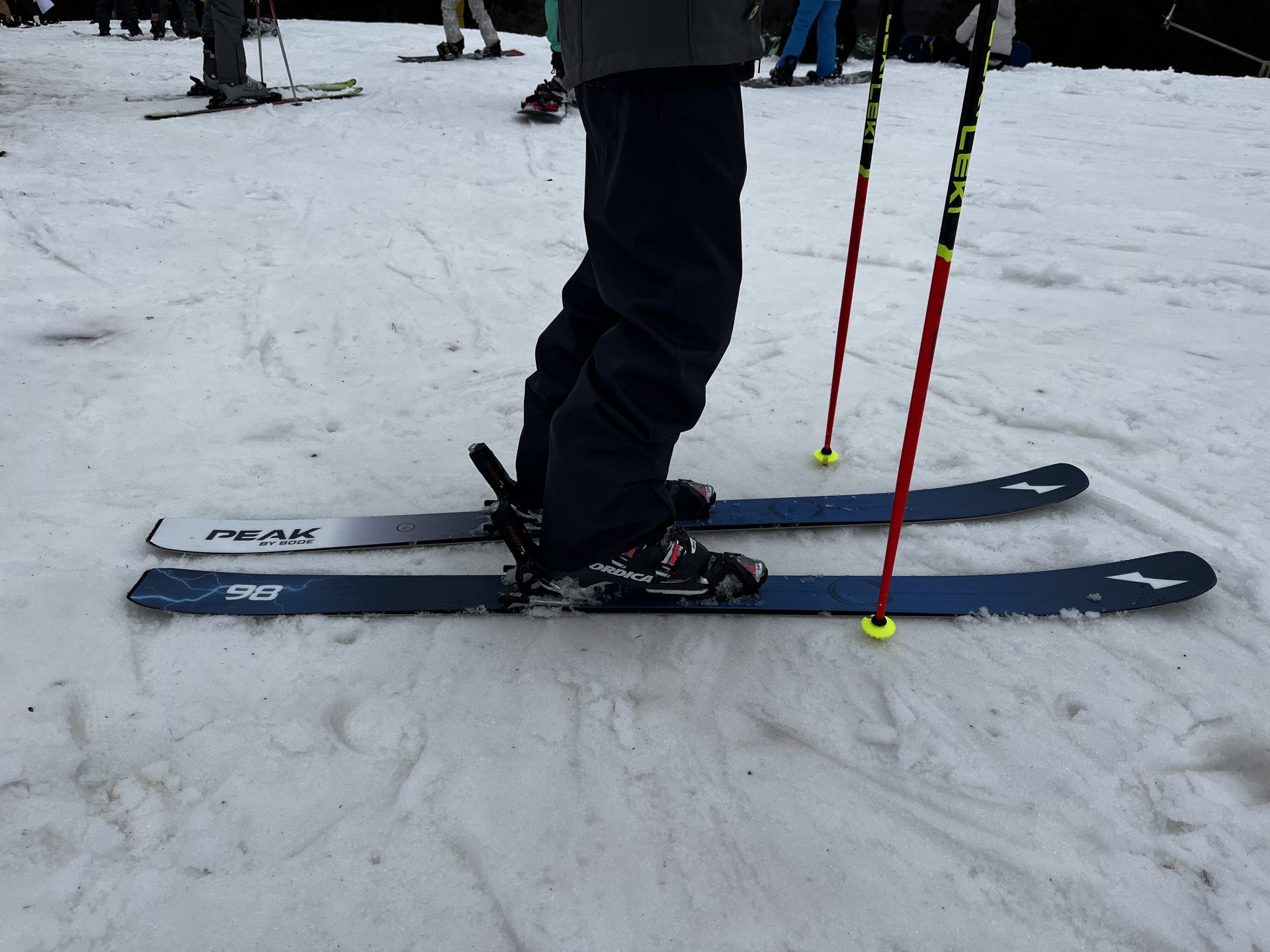
Sidecut Radius
The 168-centimeter Peak 98 has a 25-meter sidecut radius which might make you think that it is hard to make short and fast turns. “While KeyHole Technology™ lets us elongate the radius by multiple meters “on paper,” in reality, our skis execute easy short-swing turns too. But when you take them off-trail in powder, crust, and crud, there’s less of that “hooky” hourglass shaping that wants to turn when you don’t,” Peak states on its website. I had no problems making quick turns in bumps or hitting the glades and navigating through tight spots.
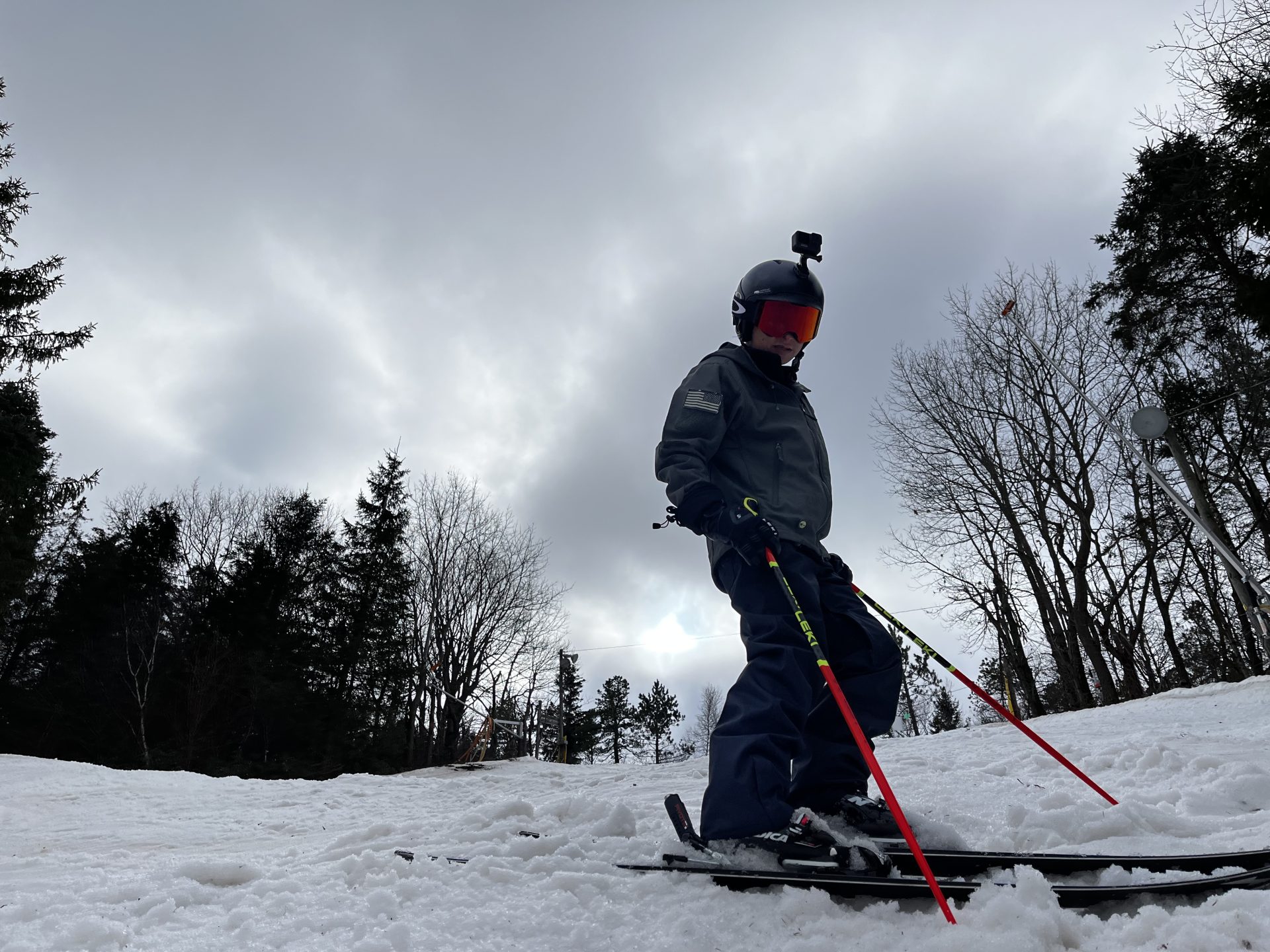
Mount Point
The Peak 98’s recommended mount point for bindings is -10 centimeters from true center, which allows the ski to float through powder and crud. I skied a lot of days this season in heavy wet snow and even times when it was raining pretty hard and the Peak 98s had no problem handling the conditions. Even though the mount point is behind true center it did not affect my ability to initiate turns.
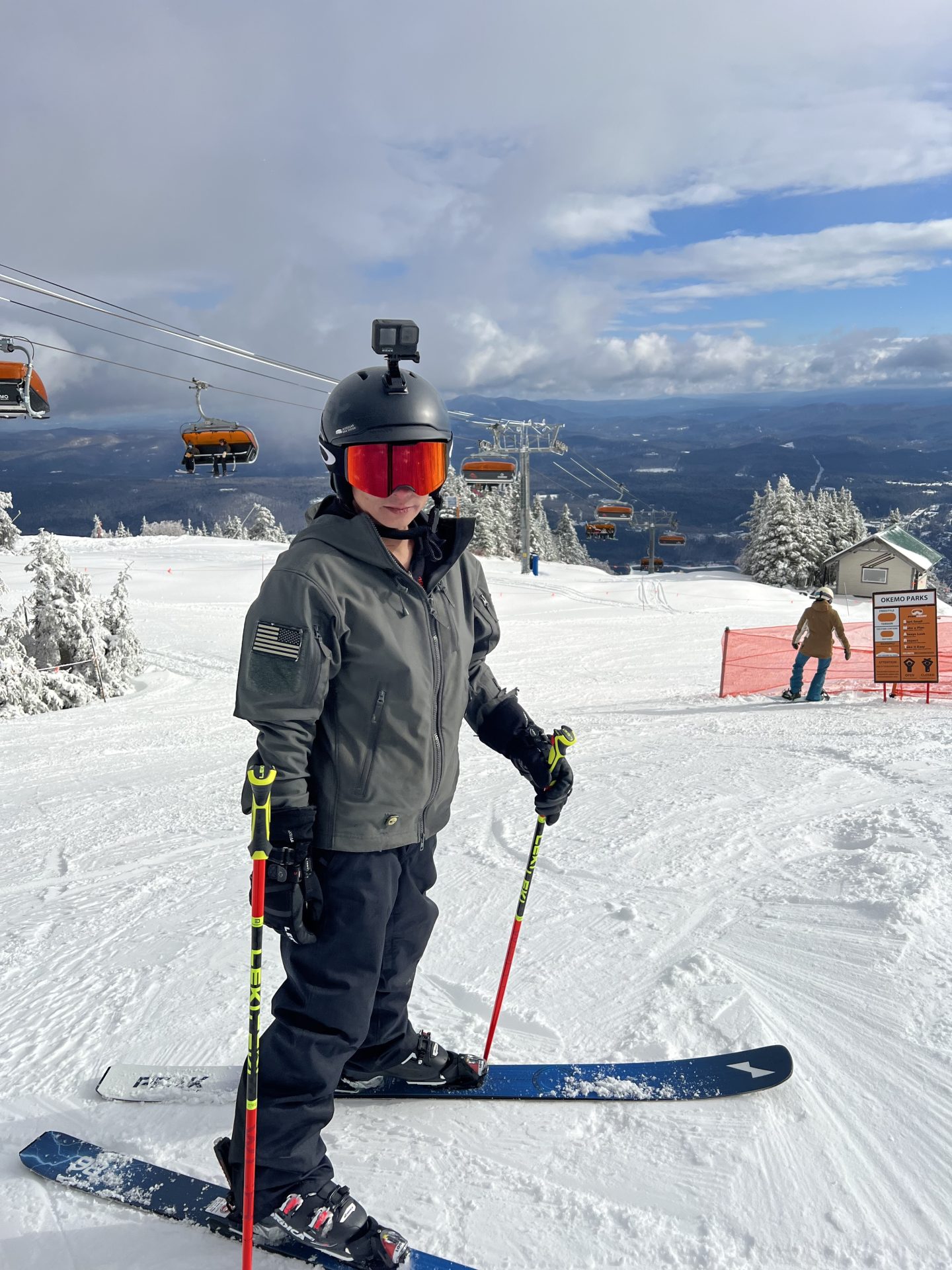
Who Should Grab a Pair of Peak 98 All-Mountain Skis
The simplest answer to this is anyone. The Peak 98s are a great option for skiers of any skill level. Being an East Coast skier, I found them to handle all the conditions that I skied on this season with ease. I did tend to be more forward in my stance this season which is due to the mounting point. It has the versatility to hit almost any type of condition on the mountain. For those who get nervous skiing on ice, I skied on a lot of ice this season and I never lost an edge even on steep terrain. The Peak 98s rip on groomers and I never felt like I was pushing the ski past its limits.
Every skier has their preferences with what type of terrain they like to ski whether it be bumps, glades, groomers, etc. If you only ski one type of terrain, then I would get the ski that is designed specifically for that. If you are looking for a ski that will do well in most conditions, then the Peak 98 is a great choice.
Not sure if the Peak 98s are for you? Peak Skis has an online quiz that will ask you a bunch of questions regarding your ski style to help pair you with the best ski for you. Take the Peak Ski Quiz and find out!

